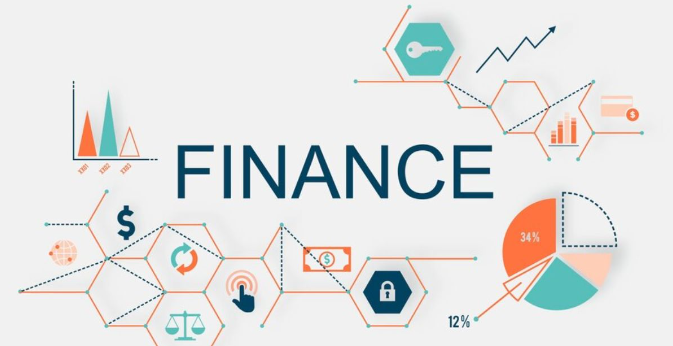Financial Instruments: A Guide to Making the Most of Your Money
There are many different kinds of financial instruments, ranging from mutual funds to precious metals. Some are riskier than others; how can you include them in your investment strategy? Starting with the definition of a financial instrument, here’s all you need to know about this type of asset.

What is a Financial Instrument?
Financial instruments are assets that can be traded, or they can be considered capital bundles that can be traded. Most financial instruments allow for the efficient flow and transfer of capital across global investors. These assets can be cash, a contractual right to deliver or receive cash another type of financial instrument, or proof of ownership in some company.
For example, if a corporation pays cash for a bond, another party must deliver a financial instrument for the transaction to be fully completed. One corporation is required to supply cash, while the other is required to supply the bond.
Types of Financial Instruments
To derive the most benefits, financial instrument classification must be used correctly. These can be quite important for businesses wanting to reduce their costs and models. As a result, businesses must ensure that they are correctly utilizing them to reap larger benefits and prevent the possibility of them backfiring.
Financial instruments are classified into three types: Cash instruments, derivative instruments, and foreign exchange instruments.
=> Watch more: Fintech Digital And The Future of Financial Services
Cash Instruments
Cash instruments are easily transferable and marketable. Also, market conditions have a strong impact on the value of these financial instruments. There are two kinds of cash instruments:
Securities: This financial instrument does have a monetary value and is traded on the stock market. When you buy a security (share), you are buying a piece of a publicly traded corporation on the stock exchange.
Deposits and Loans: Both cash instruments since they reflect monetary assets and bind both parties to a contract.
Derivative Instruments
The underlying asset, such as resources, bonds, currency, stocks, indexes, and so on, determines the value of derivative instruments. The performance of derivative instruments is determined by the underlying assets. The most popular types of derivative instruments are as follows:
- Forward: A forward contract is a personalized arrangement. It entails two parties exchanging an underlying asset at a certain exchange during a specific period.
- Future: A derivative contract in which derivatives are exchanged at a predetermined exchange rate on a future date.
- Options: An option is a sort of derivative contract entered into between two parties. The buyer obtains the right to buy or sell the underlying asset at a specified price for a set length of time. However, there is no requirement to use the right.
- SAFE (Synthetic Agreement for Foreign Exchange): This type of agreement occurs in the over-the-counter (OTC) market. It ensures a specific exchange rate for a set length of time.
- Interest Rate Swap: This is a two-party derivative arrangement. It entails the exchange of interest rates in which one party promises to pay the interest rate on the other party’s loans in different currencies.
Foreign Exchange Instruments
Foreign exchange instruments, which include currency agreements and derivatives, are traded in foreign exchange markets. These are the world’s most liquid and significant trading volume markets. The trade volume ranges from billions to trillions of dollars. Many financial institutions, brokers, and banks deal with these instruments as the forex market is available 24 hours a day but closed on holidays.
They are further classified into three types:
- Spot: The actual exchange of currency in this currency arrangement occurs no later than the second working day after the original date of the agreement. The currency exchange is referred to as ‘ spot’ since it occurs on the spot (within a limited window).
- Outright Forwards: In this currency transaction, the actual exchange of currency occurs ‘forwardly’ and before the agreed-upon date. This is advantageous in the event of fluctuating exchange rates.
- Currency swap: The simultaneous purchase and sale of currencies with different set value dates.
Asset Classes of Financial Instruments
Financial instruments can be classified into two asset classes in addition to the categories listed above. Financial instruments are classified into two asset classes: debt-based financial instruments and equity-based financial instruments.
Debt-Based
These financial instruments can be used by a company or entity to raise funds for a business. They have a set maturity period. They allow businesses to boost their profits through capital growth. Some common examples are debentures, bonds, etc.
Cash instruments in the form of loans and exchange-traded derivatives in the form of bond futures are an instance of debt-based financial instruments. This category also includes monetary instruments such as certificates of deposit (CDs) and exchange-traded derivatives such as short-term interest rate futures.
=> Watch more: Top 5 most popular fintech solutions for banks in 2023
Equity-Based
Equity-based financial instruments are structures that function as legal ownership of a company. Examples include common stock, preferred shares, convertible debentures, and transferable subscription rights.
They help firms build capital over a longer length of time than debt-based financing, but the owner is not liable for repaying any debt.
A company that owns an equity-based financial instrument can choose to either invest more in it or sell it whenever it sees fit.
Conclusion
A financial instrument is essentially a monetary contract (real or virtual) that grants some counterparty a right or claim in the form of payment (bearer instruments, checks), currency (forex), debt (bonds, loans, deposit accounts), equity ownership, or derivatives (futures, forwards, options, and swaps) or dividends (stocks). Financial instruments can be classified as securities, cash-based, or derivatives, as well as by asset class.
Many people save money in financial assets to guarantee their futures. Investing in financial instruments such as bonds, deposits, mutual funds, cash, and cash equivalents can help you multiply your money significantly. Financial instruments, fintech solutions are a viable investment and funding channel. If you want to get more information or advice on financial instruments, SmartOSC is here for you! Contact us today!
Related blog
Lorem ipsum dolor sit amet, consectetur adipiscing elit


